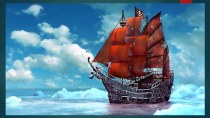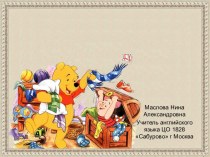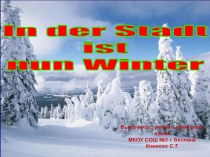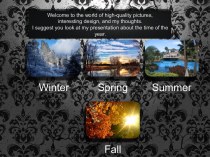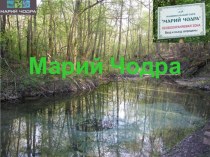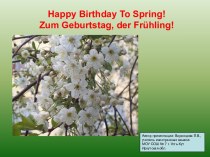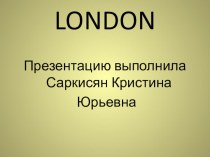- Главная
- Разное
- Бизнес и предпринимательство
- Образование
- Развлечения
- Государство
- Спорт
- Графика
- Культурология
- Еда и кулинария
- Лингвистика
- Религиоведение
- Черчение
- Физкультура
- ИЗО
- Психология
- Социология
- Английский язык
- Астрономия
- Алгебра
- Биология
- География
- Геометрия
- Детские презентации
- Информатика
- История
- Литература
- Маркетинг
- Математика
- Медицина
- Менеджмент
- Музыка
- МХК
- Немецкий язык
- ОБЖ
- Обществознание
- Окружающий мир
- Педагогика
- Русский язык
- Технология
- Физика
- Философия
- Химия
- Шаблоны, картинки для презентаций
- Экология
- Экономика
- Юриспруденция
Что такое findslide.org?
FindSlide.org - это сайт презентаций, докладов, шаблонов в формате PowerPoint.
Обратная связь
Email: Нажмите что бы посмотреть
Презентация на тему по страноведению ALASKA
Содержание
- 2. State Abbreviation: AKNickname: Last Frontier, Great Land, Land of
- 3. Alaska lies at the extreme northwest of
- 5. The Alaska State Flag More than 30
- 7. CapitalJuneau
- 9. Mount McKinley, in Denali National Park, at
- 10. Native Eskimo and Aleut tribes inhabited the
- 12. America bought Alaska from Russia on March
- 13. "Seward's icebox" . Critics of Seward's agreement
- 14. “Polar bear garden."
- 15. Gold was discovered in 1896 at Bonanza Creek, setting off the great Klondike Gold Rush.
- 16. Oil was discovered at Prudhoe Bay, Alaska
- 17. An oil spill by an Exxon tanker in Prince
- 18. Major Rivers: Yukon River Kuskokwim River . The Kuskokwim River is the
- 19. Susan Butcher 1954 - 2006Sled dog racer
- 20. Benny BensonHe is from Chignik Alaska. In
- 21. The winner of the contest was a
- 22. Benny's contribution has been honored by the
- 23. CARL Ben eielson 1897 - 1929Pionier pilot
- 24. JewelSinger and musician
- 25. joe juneauProspector-старатель
- 26. Things to DoAlaska State Bird and State
- 27. Things to Do-Lesson PlansRunning The Iditarod The
- 28. Sites to SeeAuroras-Paintings In the Sky This
- 30. In January 17, 2002, at the opening
- 31. Willow Ptarmigan Reading Comprehension.Some wags like to
- 32. woolly mammoth
- 34. Скачать презентацию
- 35. Похожие презентации
State Abbreviation: AKNickname: Last Frontier, Great Land, Land of the Midnight SunOrigin of Name: The name Alaska is derived from the Aleut word "Alyeska," meaning "great land.
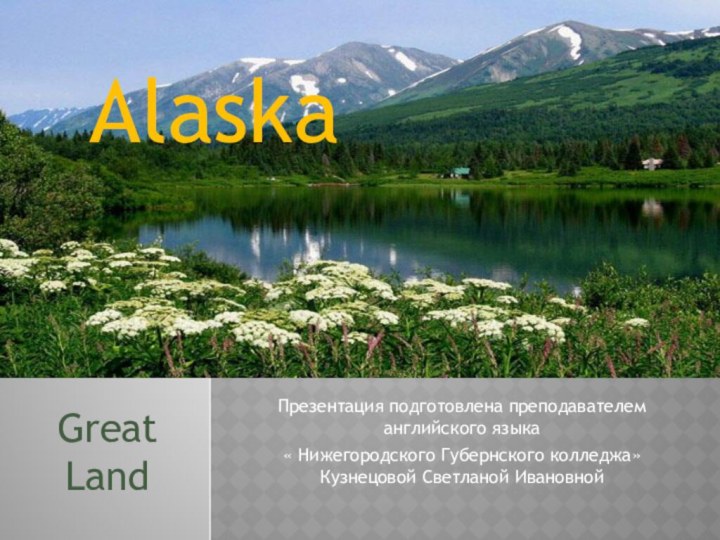
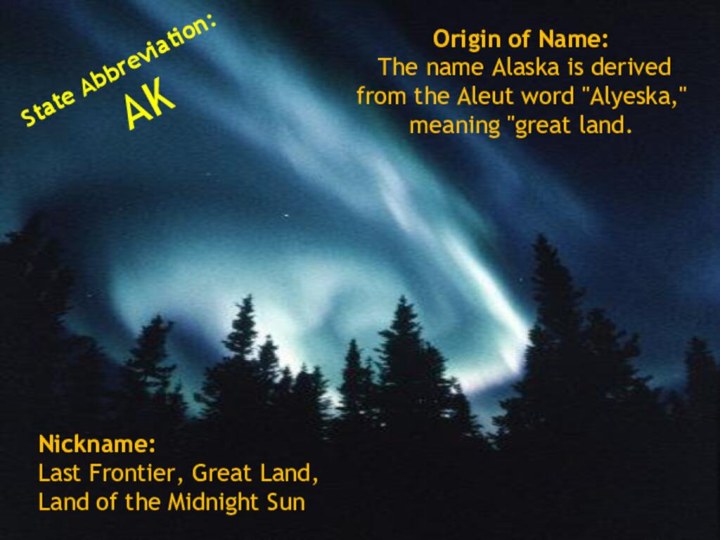
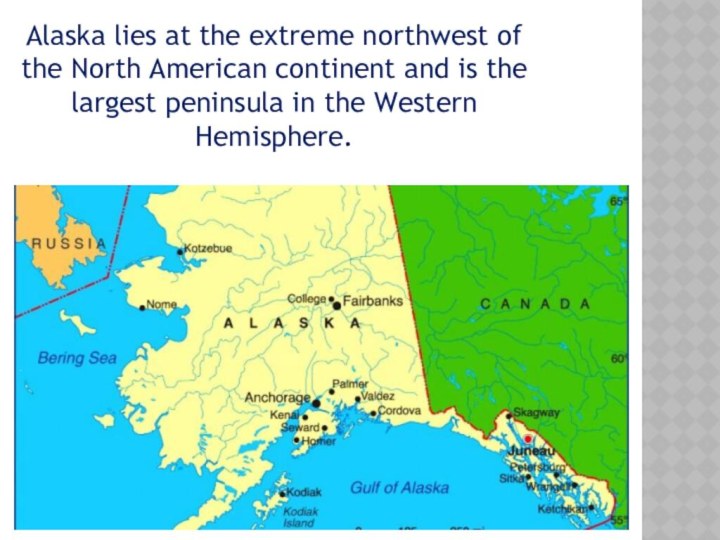

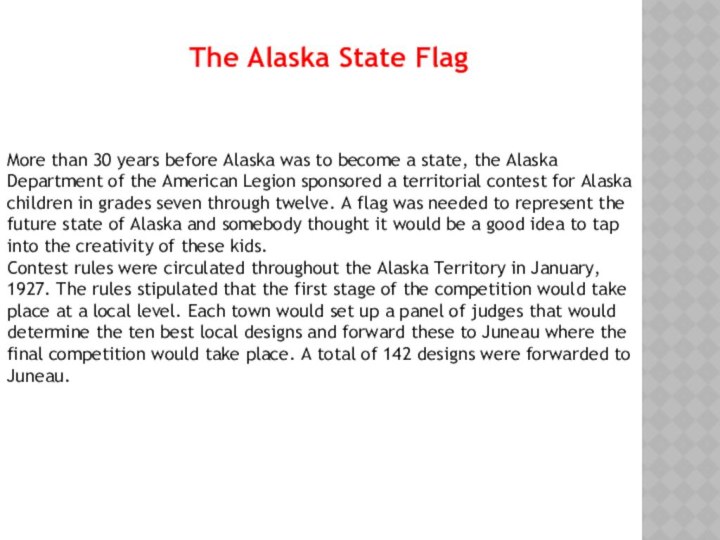
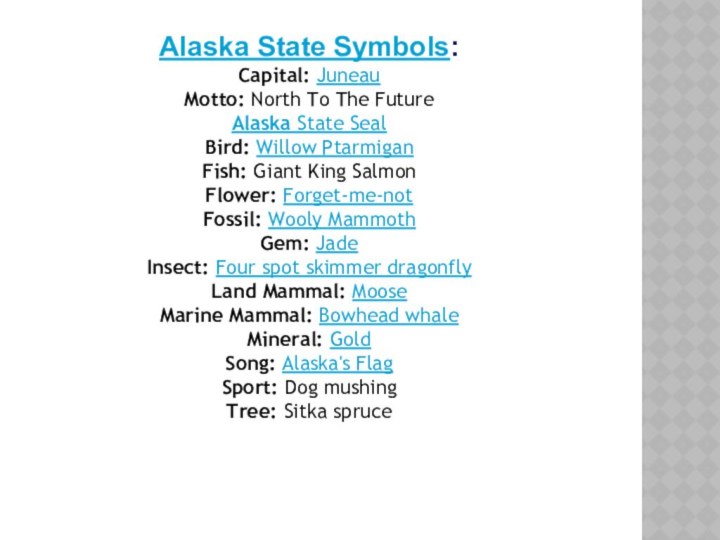

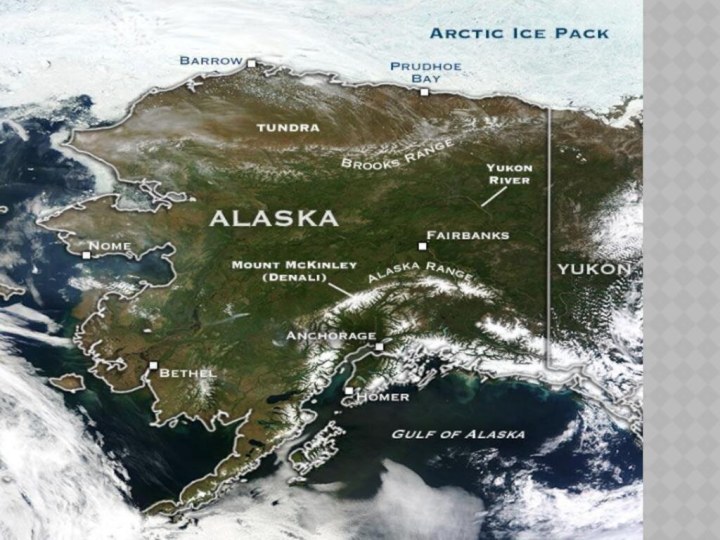


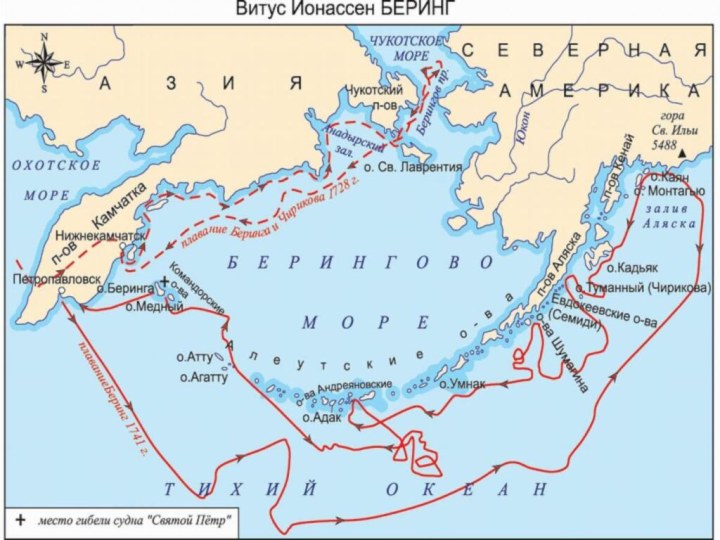
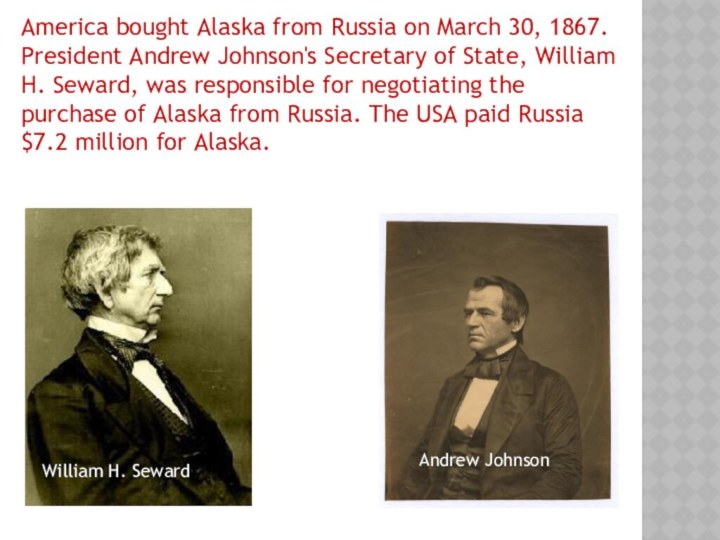

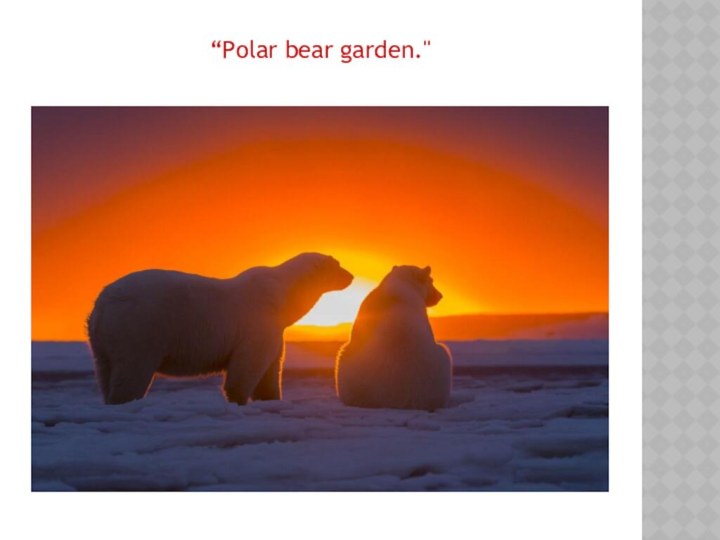

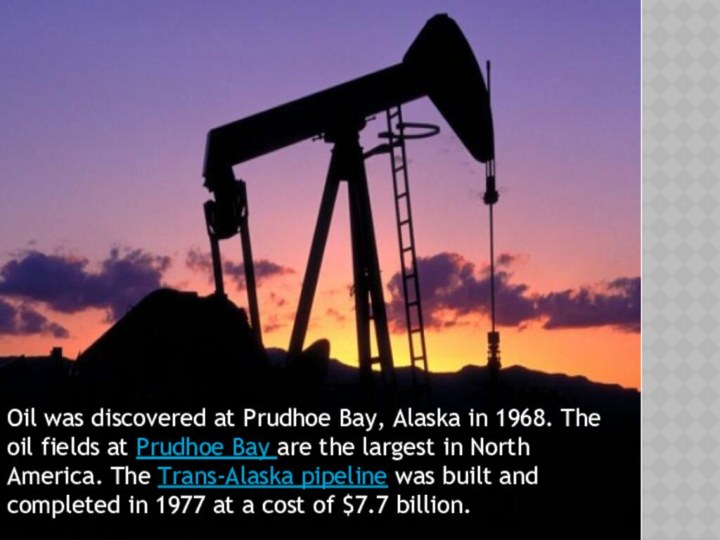

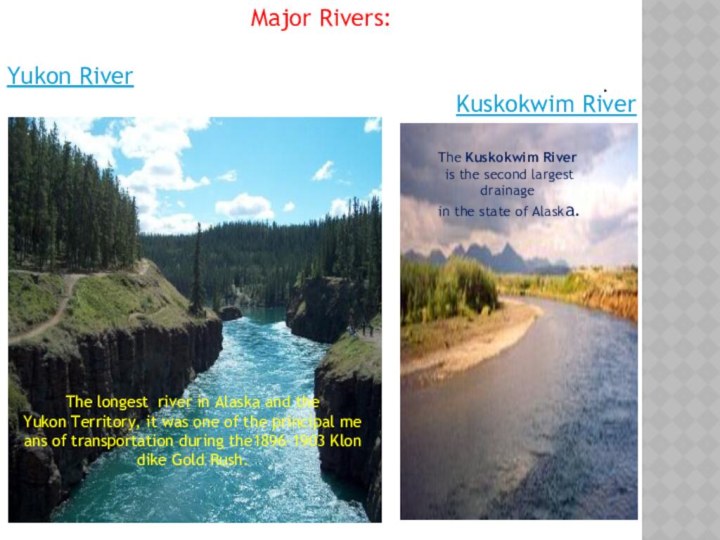
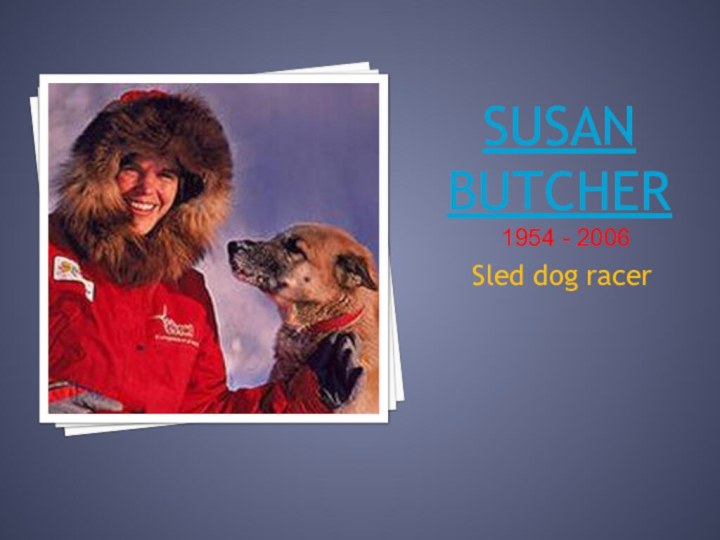



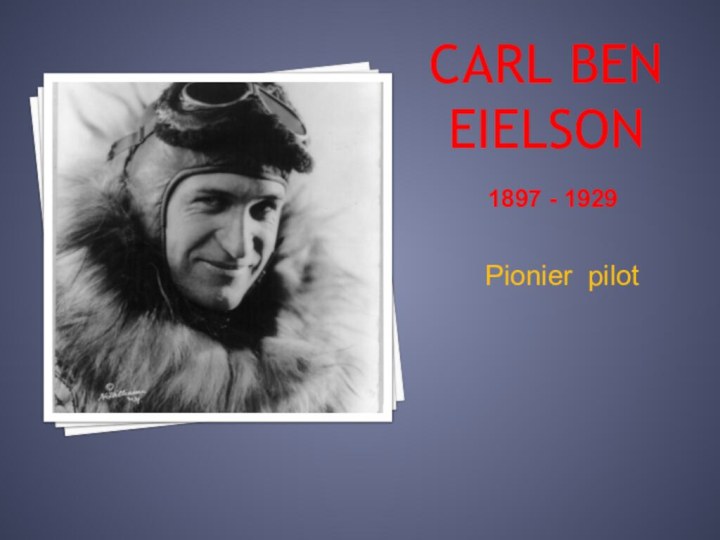

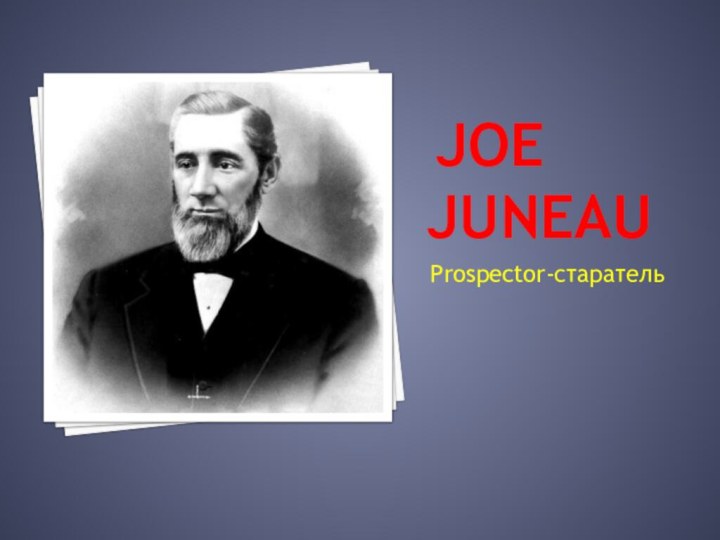


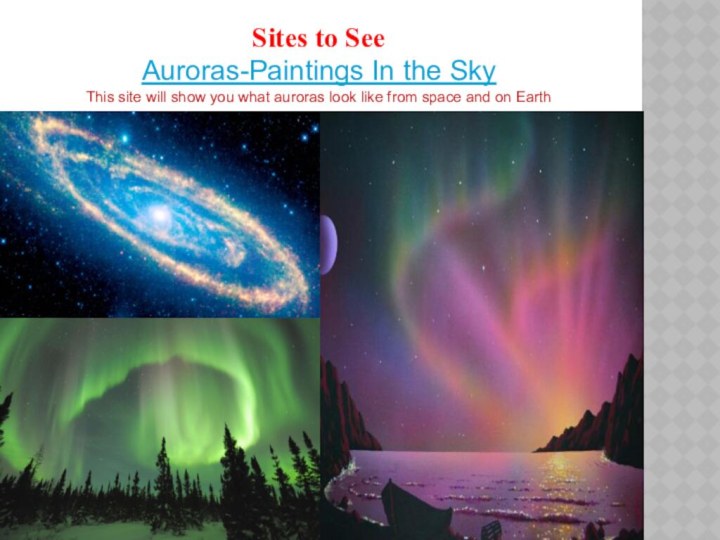

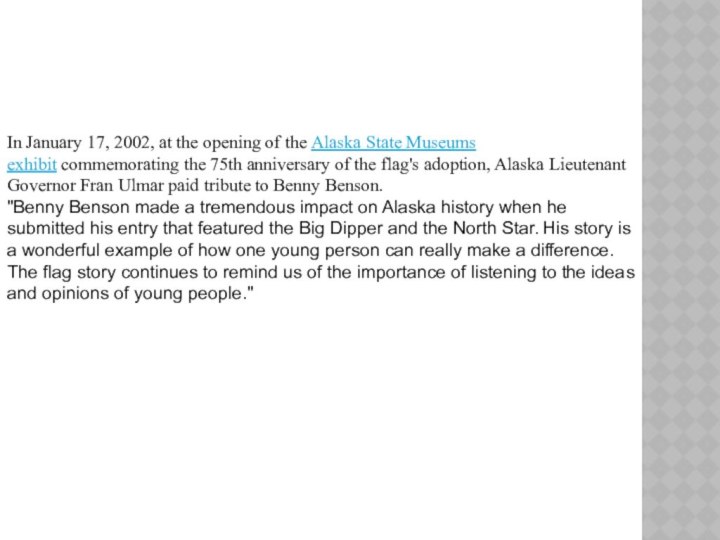
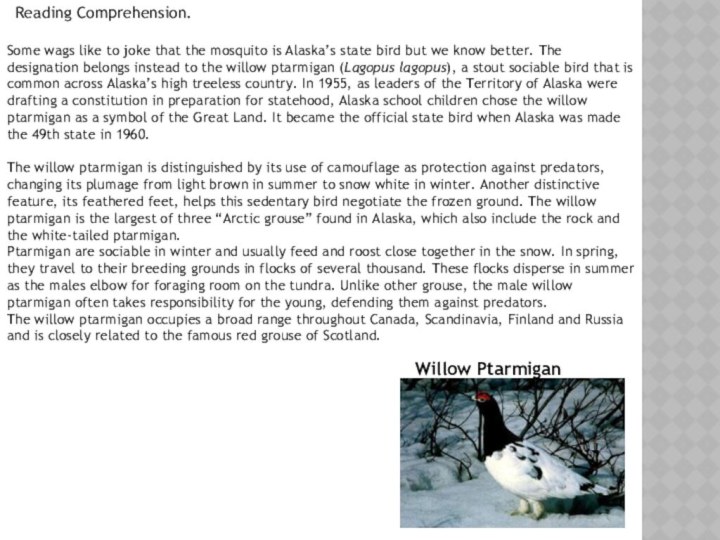



Слайд 2
State Abbreviation:
AK
Nickname:
Last Frontier, Great Land,
Land of the
Midnight Sun
the Aleut word "Alyeska," meaning "great land.Слайд 3 Alaska lies at the extreme northwest of the
North American continent and is the largest peninsula in
the Western Hemisphere.
Слайд 5
The Alaska State Flag
More than 30 years before
Alaska was to become a state, the Alaska Department
of the American Legion sponsored a territorial contest for Alaska children in grades seven through twelve. A flag was needed to represent the future state of Alaska and somebody thought it would be a good idea to tap into the creativity of these kids.Contest rules were circulated throughout the Alaska Territory in January, 1927. The rules stipulated that the first stage of the competition would take place at a local level. Each town would set up a panel of judges that would determine the ten best local designs and forward these to Juneau where the final competition would take place. A total of 142 designs were forwarded to Juneau.
Слайд 9 Mount McKinley, in Denali National Park, at 20,320
feet (6,194 meters), is the highest peak in North
America.Слайд 10 Native Eskimo and Aleut tribes inhabited the Alaska
area before it was discovered by Vitus Bering, a Dane
exploring for the Russians, in 1741. Vitus Bering was the first to map the west coast of Alaska.Слайд 12 America bought Alaska from Russia on March 30,
1867. President Andrew Johnson's Secretary of State, William H.
Seward, was responsible for negotiating the purchase of Alaska from Russia. The USA paid Russia $7.2 million for Alaska.William H. Seward
Andrew Johnson
Слайд 13
"Seward's icebox"
. Critics of Seward's agreement to
purchase the Alaska territory from Russia referred to the
plan as "Seward's Folly." They mocked his willingness to spend so much on “Seward's icebox” and Andrew Johnson's “Polar bear garden”.Слайд 16 Oil was discovered at Prudhoe Bay, Alaska in
1968. The oil fields at Prudhoe Bay are the largest in
North America. The Trans-Alaska pipeline was built and completed in 1977 at a cost of $7.7 billion.Слайд 17 An oil spill by an Exxon tanker in Prince William
Sound in 1989 damaged pristine coastline and led to
battles between environmentalists and the oil industry. The beautiful scenery, national parks, and wildlife are Alaska's main natural resources and tourist attractions
Слайд 18
Major Rivers:
Yukon River
Kuskokwim River
.
The Kuskokwim River
is the second
largest drainage
in the state of Alaska.
The longest
river in Alaska and the Yukon Territory, it was one of the principal means of transportation during the1896–1903 Klondike Gold Rush.
Слайд 20
Benny Benson
He is from Chignik Alaska. In 1926
at age of 13 Benny Benson desighned
the state flag. The blue field is forthe sky and the forget-me-not is the state flower.
The North Star is for the future of the state of Alaska, the most northern of the Union. The dipper is for the Great Bear – symbolizing strength.
Слайд 21 The winner of the contest was a seventh
grade Aleut student, thirteen year old John Bell (Benny)
Benson from Chignik. He was living in an orphanage in Seward, the Jesse Lee Mission Home, at the time of the contest.He designed the present Alaska State Flag with a blue background to represent the sky and the Forget-me-not flower. On that background were placed eight gold stars to represent the Big Dipper and the North Star. The Big Dipper forms part of the constellation Ursa Major or Great Bear; symbolizing strength.* The North Star represents the future state of Alaska, the most northerly in the Union. Benny's simple, elegant design was adopted by the Alaska Territorial Legislature in May, 1927.
Слайд 22 Benny's contribution has been honored by the city
of Anchorage, where you could find yourself walking down
Benson Boulevard and Kodiak, where you could find yourself walking down Benny Benson Drive. The Benny Benson Secondary School, in Anchorage, is a S.A.V.E. II school (Specialized Academic and Vocational Education), specializing in a Work-Study Educational Program for High School Students.
Слайд 26
Things to Do
Alaska State Bird and State Flower Printable
Color Page. Before printing under File in Page Setup set
margins to zero.Make A Binky Puppet Alaska's famous zoo polar bear.
Слайд 27
Things to Do-Lesson Plans
Running The Iditarod The Last
Great Race on Earth (Grade 3-5) In this WebQuest you will
learn what it is like to compete in this incredible race by assuming the roll of a musher in the Iditarod, making all the preparations necessary for the race, registering, training, and finally competing.
Слайд 28
Sites to See
Auroras-Paintings In the Sky
This site will
show you what auroras look like from space and
on EarthСлайд 30 In January 17, 2002, at the opening of
the Alaska State Museums exhibit commemorating the 75th anniversary of the
flag's adoption, Alaska Lieutenant Governor Fran Ulmar paid tribute to Benny Benson."Benny Benson made a tremendous impact on Alaska history when he submitted his entry that featured the Big Dipper and the North Star. His story is a wonderful example of how one young person can really make a difference. The flag story continues to remind us of the importance of listening to the ideas and opinions of young people."
Слайд 31
Willow Ptarmigan
Reading Comprehension.
Some wags like to joke
that the mosquito is Alaska’s state bird but we
know better. The designation belongs instead to the willow ptarmigan (Lagopus lagopus), a stout sociable bird that is common across Alaska’s high treeless country. In 1955, as leaders of the Territory of Alaska were drafting a constitution in preparation for statehood, Alaska school children chose the willow ptarmigan as a symbol of the Great Land. It became the official state bird when Alaska was made the 49th state in 1960.The willow ptarmigan is distinguished by its use of camouflage as protection against predators, changing its plumage from light brown in summer to snow white in winter. Another distinctive feature, its feathered feet, helps this sedentary bird negotiate the frozen ground. The willow ptarmigan is the largest of three “Arctic grouse” found in Alaska, which also include the rock and the white-tailed ptarmigan.
Ptarmigan are sociable in winter and usually feed and roost close together in the snow. In spring, they travel to their breeding grounds in flocks of several thousand. These flocks disperse in summer as the males elbow for foraging room on the tundra. Unlike other grouse, the male willow ptarmigan often takes responsibility for the young, defending them against predators.
The willow ptarmigan occupies a broad range throughout Canada, Scandinavia, Finland and Russia and is closely related to the famous red grouse of Scotland.
